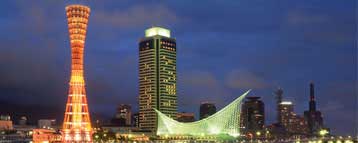
JAPAN Enabling growth
Japan’s Narita International Airport boasts of one of the most prominent networks in Asia, making the best use of its geopolitical location between North America and Asia. The three airline alliances share Narita as their base. Serving 82 airlines connecting 100 cities in 34 countries and 3 territories, and 15 cities in Japan, the airport […]

Japan’s Narita International Airport boasts of one of the most prominent networks in Asia, making the best use of its geopolitical location between North America and Asia. The three airline alliances share Narita as their base. Serving 82 airlines connecting 100 cities in 34 countries and 3 territories, and 15 cities in Japan, the airport has strong connections in North America, Asia and Europe. Routes to Denver, San Jose and San Diego in the US contribute to reinforce the high demand path between North America and Asia.
“Especially for San Jose, the IT companies’ concentrated area, increase in relative commodities is expected. Since Germany’s economy is catching upward momentum, Leipzig, the emerging cargo hub, and Dusseldorf where there are a lot of Japanese firms, are expected to boost a flow of passengers and cargo,” said Fumio Gunji, director-cargo business, Narita Airport.
In March 2013, Narita completed a development to increase its annual capacity to 270,000 slots with its next target of 300,000 slots to be completed within fiscal 2014. The development projects include a construction of an LCC terminal, parking bays, pavement of taxiways and expansion of hourly slots, as well as an enhancement of two terminal functions. Outside of the airport, highway constructions are underway, which will result in more efficient linkage between Narita and other cities.
Being an inland airport, there are some limitations for further expansion of its cargo areas. Narita and Haneda are in complementary relationship; Haneda functions to makes up for Narita’s curfew by accepting late night flights during 11pm-6am.
With the open skies policy coming into effect, the airport cut landing fees by an average of 5.5 percent and introduced additional tonnage discount rule, as well as relaxing night time operation restriction. . “These driving forces have been effective so far. By expanding the capacity, in line with the effective initiatives, we expect to boost the extensive aviation network of Narita, our competitive edge, to attract more flights and more cargo,” Gunji added.
Thailand’s Asian Air and South Korea’s Air Incheon have recently started their cargo services from Narita. “We are looking at tapping new destinations in Asia, especially within 4000 km coverage. We are actively marketing to solicit new routes and services to Narita. We are also keeping an eye on developments of Middle Eastern airlines in their routes and services,” Gunji revealed.
Contributing to the paperless initiative in the air cargo industry, the Nippon Air Cargo Clearance System (NACCS) is in place as the IT system in Japan. It helps in online processing of procedures taken with customs and other relevant administrative authorities or related private-sector services for arriving/departing ships and aircraft or import/export cargo; the procedures range from the point of aircraft arrival at the airport to unloading of air cargo, import declaration, import permission and domestic delivery in the case of imports, and ranges from the point air cargo is carried to the “Hozei” bonded area to export declaration, export permission, loading onto aircraft and aircraft departure in the case of exports.
Recently, FedEx Express, a subsidiary of FedEx Corp commenced operations at its new North Pacific regional hub, at Kansai International Airport in Osaka. With a capacity to sort up to 9,000 packages per hour, the new facility serves as a consolidation and transshipment point for shipments between Asia and the United States, giving customers greater access to and from markets in Asia-Pacific, the Americas and Europe. The new hub continues to fulfill its role handling international cargo for the Western Japan region. Its expanded 24-hour operation will allow the facility to respond more quickly and flexibly to customer needs.
“FedEx, as the world’s leading global logistics facilitator, is in a unique position to connect the world, where cross-border trade is becoming increasingly important as a contributor to economic growth. Our North Pacific Regional Hub not only provides us with greater operational flexibility, but also allows us to offer our customers in Japan and the Asia Pacific access to regional and global trade opportunities through our strong operational network,” said David L. Cunningham, president, Asia Pacific, FedEx Express in a press statement.
Japan’s first all cargo airline Nippon Cargo Airlines (NCA) is now looking to enhance its presence in global markets while further strengthening cargo business operations in Japan. Moreover, by tightening cooperation with domestic and overseas airlines while expanding chartered flight services that allow for more flexible operations, the airline is aiming at promoting new demand for its cargo services.
Aside from its main airline, All Nippon Airways (ANA), the group includes its regional carrier, ANA Wings; its charter operation, Air Japan; cargo operations, ANA Cargo; the small domestic LCC, Air Do and its larger LCCs, Peach and AirAsia Japan. Just over half of ANA Group’s operations are domestic, 9.5 per cent are cargo and 26 per cent international traffic. Within its cargo operations, ANA plans to improve aircraft utilisation rates, expand its cargo network and aircraft, and increase the amount of cargo it transports on passenger flights.
Japanese air cargo transport has undergone a remarkable growth over the years. This trend of steady development of air freight transport would continue for the foreseeable future because of the integration of world market, the improvement of physical distribution stimulated by new information technology, the introduction of more efficient aircraft, etc.

